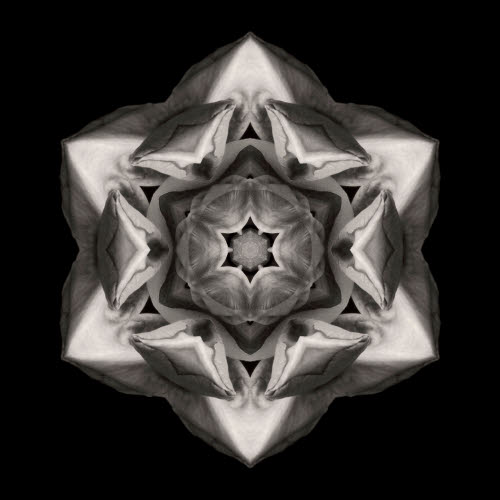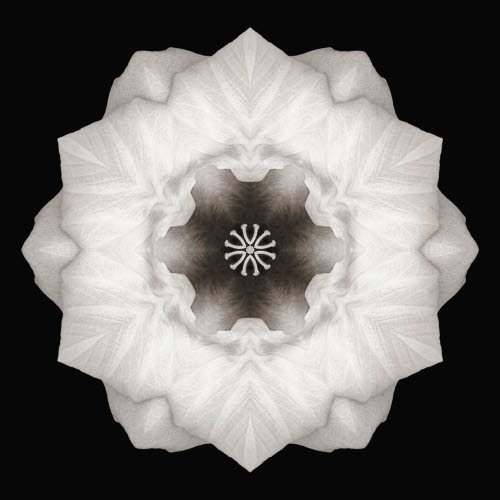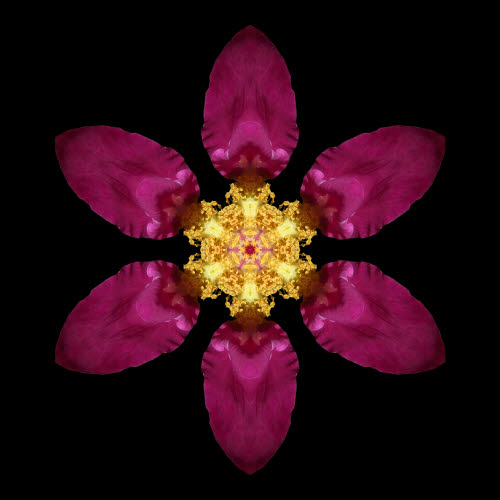
Rhododendron ‘Ponticum Roseum II’
Click here to pop up the original full-color image
An Addendum to ‘Black and White Thinking’ in Shades of Gray
By ‘shades of gray,’ in my previous post, I’m thinking like a black-and-white photographer, whose images can actually display up to thousands of discrete shades of gray (including many variants of gray — silver-toned, blue-toned, brown-toned, warm-toned, cold-toned, etc), selected from a technically infinite number between pure blacks and whites. I’m thinking of those “boring grays,” as some may characterize the color gray, instead as the architecture of thoughts, feelings, ideas, and of course of works of art, not as a uniform color-that-is-no-color. In my work with clients, for example, I’m starting to see this architecture as the complex intersection of genetics, environment, experience, and soul that makes them who they truly are, the interplay of all these inheritances and forces beneath the more apparent “colors” of their appearance, social status, and immediate presentation. I’m just starting to think about this, but I believe it has wide application in the ways I function everywhere in my life, and most likely in the ways we all function.
Any thoughts on this are both welcome and appreicated.
– David
Discussion:
‘Black and White Thinking’ in Shades of Gray
Art, Healing, and Transformation group
Flower Mandalas Project group
Request a flower mandala screensaver: Fifteen Flower Mandalas
© 2008, David J. Bookbinder

